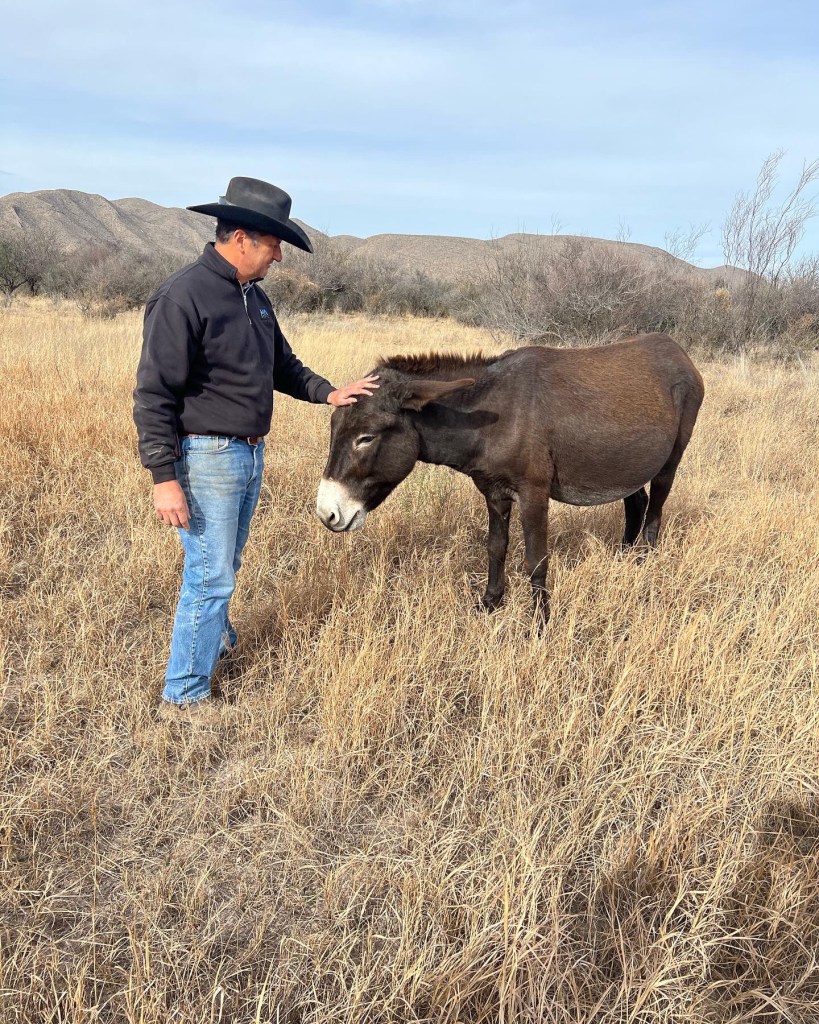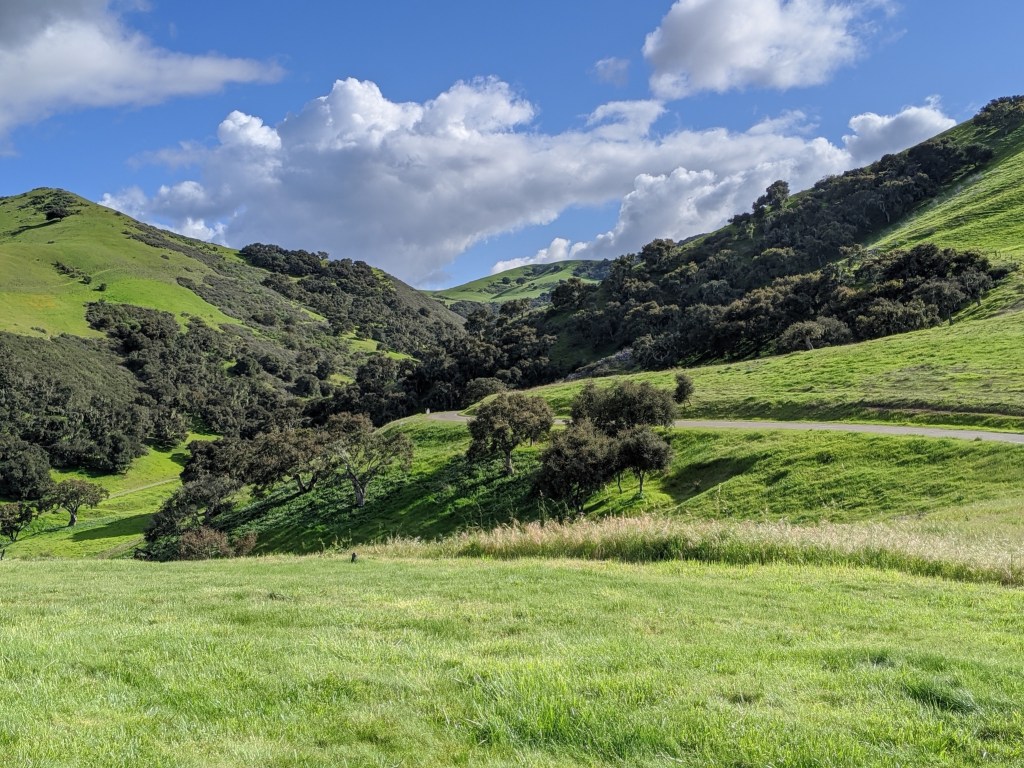Mexico’s Regenerative Ranching Wisdom
Comes to Santa Barbara
Grasslands Regeneration Project’s Alejandro Carrillo
Syncs Cattle Grazing with Nature
by Matt Kettmann | March 26, 2023

“We mimic nature. We work in sync with nature. We let nature heal itself.”
These are not uncommon aims for ranchers and farmers concerned about the dire state of the environment, a growing community worldwide that’s tapping both ancient and cutting-edge technologies to make their practices healthier for everything. But when they’re uttered by a rancher who’s turned a 30,000-acre hellscape of northern Mexico’s Chihuahuan desert into a model for restoring biodiversity, moderating temperatures, and increasing effective rainfall, those words ring with extra resonance.
Alejandro Carrillo is referring to his two decades of work at Las Damas Ranch, located about four hours south of El Paso, Texas. “We don’t burn. We don’t irrigate. We don’t seed,” explained the fourth-generation rancher, who comes to Santa Barbara this week for a workshop and public talk. “Mesquite, cholla, juniper — everybody is fighting against those woody plants. We don’t even try.”
And yet, because of rotational grazing and other strategies, like supporting the work of dung beetles and termites, the mesquite are dying and the native plants are thriving. The cows, meanwhile, are happier than most of those in California.

“There was a time when my main goal was to grow so much grass that I couldn’t see my cows,” said Carrillo. “Now my goal is to walk barefoot on my ranch in the middle of summer without any problems. If we don’t work with nature, it’s going to get very aggressive. It’s going to throw a lot of thorns and cactus, with the burning ground so hot you can’t even bear it with your boots. But as you go into this regenerative journey, things are going to be much more pleasant.”
As the founder of the Grasslands Regeneration Project, Carrillo is the latest in a long line of Chihuahuan ranchers to be a leader in the regenerative agriculture movement, and he now spends much of his time evangelizing his experiences around the world. His Santa Barbara visit includes a two-day, $250 workshop at the Las Cumbres Ranch near Los Alamos (April 1-2), where the Selbert family is using holistic management to raise Bonsmara cattle, and a free talk on Sunday, April 2, in the Funk Zone. It’s the inaugural event for Las Cumbres Ranch Foundation, which plans to bring a series of regenerative-minded experts to the Central Coast for years to come.
Before ranching, Carrillo studied computer science and worked in IT for 15 years, from Mexico to Maryland to Miami. About 20 years ago, his 70-year-old father — who worked in banking before returning to the family’s rural roots — asked if Carrillo wanted to come back to Mexico to run the ranch. He didn’t hesitate. “I really liked all those cowboy things growing up,” laughed Carrillo. “I watched too many Western movies.”
He knew that the conventional way of ranching was no longer a viable long-term strategy, and took workshops on holistic management sponsored by the state of Chihuahua, which turned out to be a hotspot for such thinking. While neighboring ranchers took longer to adjust, Carrillo dove right in.
“We don’t want to change when we’re still doing good,” he explained of others’ reluctance. “At that point, 20 years ago, people weren’t broken enough. They still had enough biomass that they could count on it. Not anymore.”
He was further convinced by his mentor Jesus Almeida, who said that bringing life back to Las Damas would keep his own father alive longer. He was right. “Every time he goes to the ranch, he gets energized, he gets more life,” said Carrillo of his father, now 90 years old. “Think about it for a moment: If you see a picture of bare ground, with cactus and thorns and high temperatures, that is so depressing, versus an image of grasslands like the African savannah. That really brings peace of mind for more than one reason.”

Though still a large target for many concerned about the climate, conservation, and animal rights, cattle ranching is increasingly understood to be an important tool in landscape management and habitat restoration, at least when done in thoughtful ways. When moved steadily across a property, the cattle can aerate the soil and promote grass growth in the same way that roving herbs of bison, mule deer, antelope, bighorn sheep, and other large mammals once did.
“The cow has seven or eight tools to help us,” said Carrillo, explaining the benefits of their hooves, manure, urine, and saliva, which helps chewed grass grow back faster. “It’s like a bio-machine.”
Using electric fences, he moves his cattle twice a day, never returning to the same spot in the same year. That makes the soil more porous, which allows rainwater to seep deeper, promotes mycorrhizal growth, keeps the grass greener longer, and brings temperatures down. He said that any rancher who adopts these techniques should be able to see increases in both biomass and biodiversity within one year.
The caveat is that, instead of applying regenerative strategies to the poor parts of a ranch, first apply them to the most productive areas. “These are going to give you the motivation to keep going from the best to the worst,” said Carrillo. “You’re taking less risk, but you get a big return on investment because the best spots are so productive.”
So how does the beef taste? “The diversity is so huge that it not only gives nutrient density, but also gives specific flavors,” said Carrillo. “It’s the same deal as terroir in wine, but our flavors are coming from the different plants that the cows and the sheep ate.”
Carrillo is encouraged by rising interest in regenerative ranching, especially among young people, including many women. “Conventional ranching is no longer able to keep anyone on the ranch,” he said. “These new practices are bringing in new people, and we need smart people going back to ranching. It doesn’t matter what you do in life: You eat every day. So we need people who produce good, healthy nutrients.”
Learn more and buy tickets for the Alejandro Carrillo’s two-day workshop at Las Cumbres Ranch here, and/or register for his free talk on Sunday, April 2, at 6:30 p.m. at the Santa Barbara Wine Collective here. See lascumbresranch.com and desertgrasslands.com.





You must be logged in to post a comment.